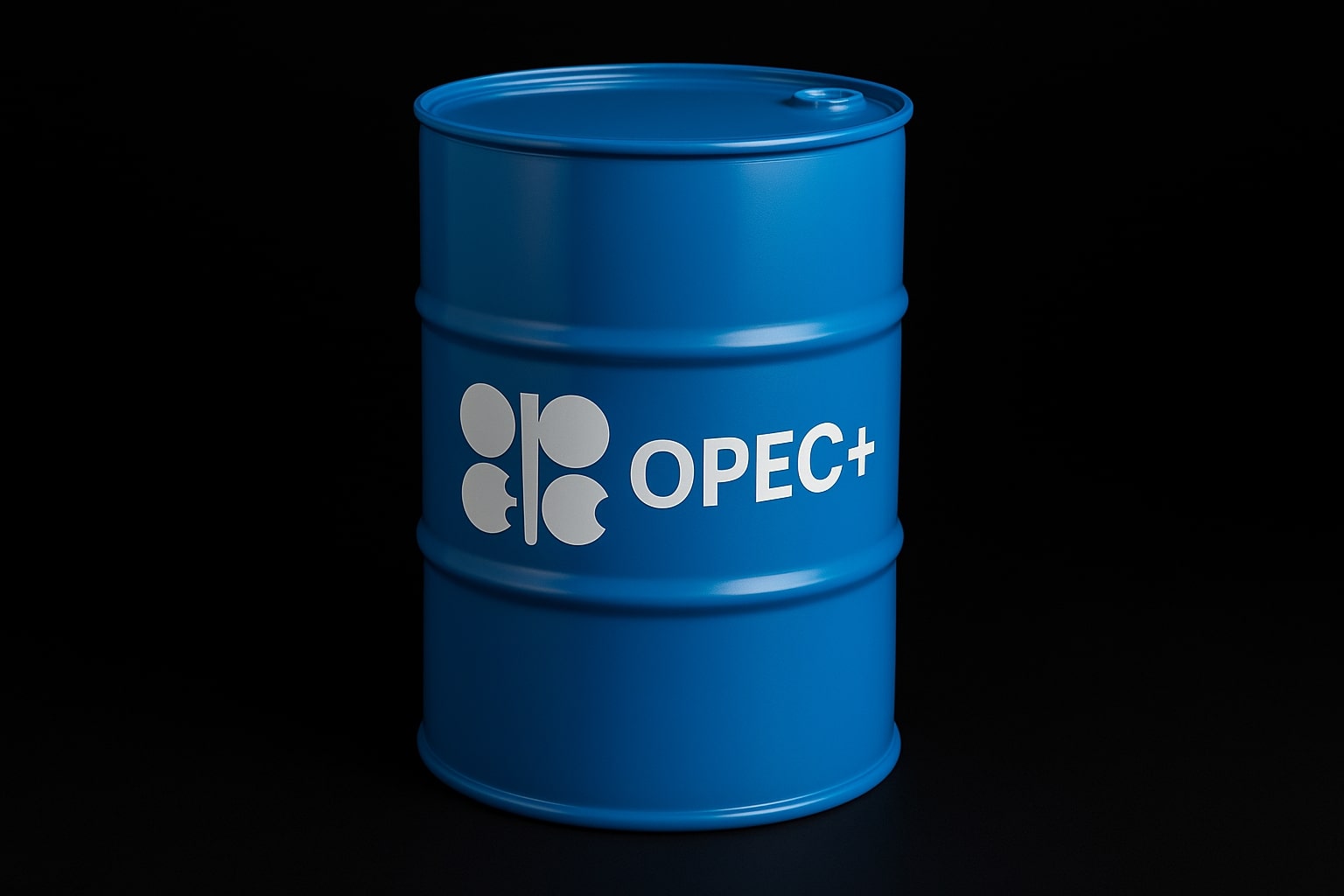
Natural Gas Tanks to $3.21 — Rebound Coming or Collapse Below $3?
Oversupply, Weak Demand, and LNG Outages Rattle NG=F Futures: Will Bulls Regain $3.80? | That's TradingNEWS
Natural Gas (NG=F) Falters Below $3.50 as Supply Surges and Demand Slumps
Weak Demand, Storage Glut, and LNG Slowdown Pressure U.S. Natural Gas
Will Natural Gas Break Below $3.20 or Rebound With Summer Demand?
U.S. natural gas futures collapsed this week, dropping 5.7% to settle at $3.214 per million British thermal units (mmBtu) for June contracts on NYMEX — the lowest close since May 19. Even July contracts, now the front-month, slipped 4.6% to $3.57. Despite brief intraday rallies, price action was volatile and thin, with expiration-day volume under 2,500 contracts — a tiny fraction of the average 165,000.
That selloff coincides with a sharp downturn in next-day Henry Hub spot prices, now hovering at $3.20, which have remained consistently below front-month futures since late April — signaling bearish sentiment. The persistent gap between spot and futures contracts is inviting arbitrage plays, adding downward pressure.
Gas Supply Ramps Up, But Pipeline Maintenance Creates Temporary Dips
Output in the Lower 48 states slipped to a two-month low of 103.7 billion cubic feet per day (bcfd) mid-week, after peaking at 105.4 bcfd on Tuesday — mostly due to spring pipeline maintenance. Kinder Morgan’s 2.7-bcfd Permian Highway pipeline is undergoing turbine replacement, temporarily lowering capacity. However, these are seasonal adjustments and not structural production declines.
Monthly production for May still averages 105.0 bcfd — only marginally lower than April’s record of 105.8 bcfd. With demand not keeping pace, this persistent output suggests oversupply pressure heading into summer.
LNG Feedgas Demand Drops Below Record April Levels
Exports to U.S. LNG plants fell to 15.1 bcfd in May, down from the record 16.0 bcfd in April. Cameron LNG, Corpus Christi, Sabine Pass, and Freeport have all undergone planned and unplanned outages, cutting intake capacity. Cheniere’s upcoming three-week maintenance at Sabine from June 2–23 will further limit liquefaction activity.
This drop in feedgas demand has been a key driver of the recent downward pressure on futures contracts. With export volumes unlikely to rebound until late June, the LNG corridor offers limited upside in the short term.
Demand Outlook Softens Despite Seasonal Shifts
LSEG projects Lower 48 total demand, including exports, will drop from 96.1 bcfd this week to 95.7 bcfd next week. The cooling degree day (CDD) forecast has been raised to 146 (from 133) in the coming two weeks, yet overall demand remains muted compared to power generation expectations.
Power sector consumption slid to 31.1 bcfd this week, from 33.1 bcfd the week prior. Industrial and residential segments also dropped slightly. With natural gas now only supplying 31% of the U.S. power generation mix — down from 42% a year ago — structural demand erosion is becoming visible.
EIA Storage Build Beats Estimates, Bearish Signal for NG=F
The latest EIA report showed a build of +101 billion cubic feet (Bcf) in working gas storage, versus analyst expectations of +99 Bcf. U.S. inventories now stand at 2,474 Bcf — 93 Bcf above the 5-year average but still 316 Bcf below last year’s level.
Traders viewed the higher-than-expected build as a bearish catalyst, further pressuring prices. With weak demand and near-record production, storage injections could accelerate, potentially breaching surplus territory by mid-summer.
Technical Analysis Points to Breakdown Toward $3.20
Natural gas futures (NG=F) are teetering just above key technical support near $3.40. A confirmed breakdown below this level opens the door to a test of $3.20 — and possibly $3.00. Short-term momentum has turned bearish, with the 50-day and 200-day EMAs now converging near $3.68–$3.74, capping any rebound attempts.
The triangle pattern that formed after the bounce from $3.561 has failed to break higher. If bulls can’t reclaim $3.80 in the near term, the path of least resistance remains lower.
EIA Forecasts $4.10 Spot Price in 2025, But Bulls Lack Near-Term Catalyst
Despite short-term weakness, the EIA’s Short-Term Energy Outlook pegs the 2025 natural gas spot price at $4.10/mmBtu, nearly double 2023’s average of $2.20. LNG expansion and electric power sector demand are driving the bullish forecast, but current fundamentals are nowhere near that level.
EQT Corporation noted in its earnings that industrial gas usage barely dipped during the COVID-19 crisis — a testament to gas’s resilience. Still, traders are watching for signs of a real demand rebound, which has yet to materialize.
CRK and ET Poised to Capitalize If Recovery Materializes
Comstock Resources (NASDAQ:CRK) remains one of the best-positioned upstream names, with a multi-decade drilling inventory across Haynesville and Bossier formations. If prices rise above $4, CRK’s cash flows could surge, making it a strong leverage play.
Meanwhile, Energy Transfer LP (NYSE:ET) is betting on a new demand frontier: AI-powered data centers. It is actively negotiating with over 150 facilities and has already signed a gas supply agreement with CloudBurst, a Texas-based AI infrastructure hub. These partnerships could drive massive gas throughput for ET’s pipelines over the next decade.
Verdict: Natural Gas (NG=F) — Hold With Bearish Short-Term Outlook
Natural gas remains under structural pressure from oversupply, weak seasonal demand, and LNG bottlenecks. Until exports rebound or storage levels shrink, NG=F will struggle to stay above $3.50. Near-term downside targets are $3.20 and $3.00. That said, long-term fundamentals — especially around power and AI-driven demand — remain bullish.
Rating: HOLD (Short-Term Bearish / Long-Term Bullish)
Key Price Levels:
Resistance: $3.80 / $3.95
Support: $3.40 / $3.20 / $3.00
That's TradingNEWS
Read More
-
BITQ ETF Soars 66.55% as Bitcoin Blasts Past $124,000 — Crypto Equities Lead 2025 Rally
13.10.2025 · TradingNEWS ArchiveStocks
-
XRP ETFs XRPR, XRPI Slip as Ripple XRP-USD Holds $2.62 — SEC Fast-Track Could Ignite $20B
13.10.2025 · TradingNEWS ArchiveCrypto
-
Natural Gas Price Forecast - NG=F Steadies at $3.00 as U.S. Export Boom Tests Old Fields
13.10.2025 · TradingNEWS ArchiveCommodities
-
USD/JPY Price Forecast - Dollar to Yen Climbs to ¥152.28 as Japan’s Political Shakeup
13.10.2025 · TradingNEWS ArchiveForex



















